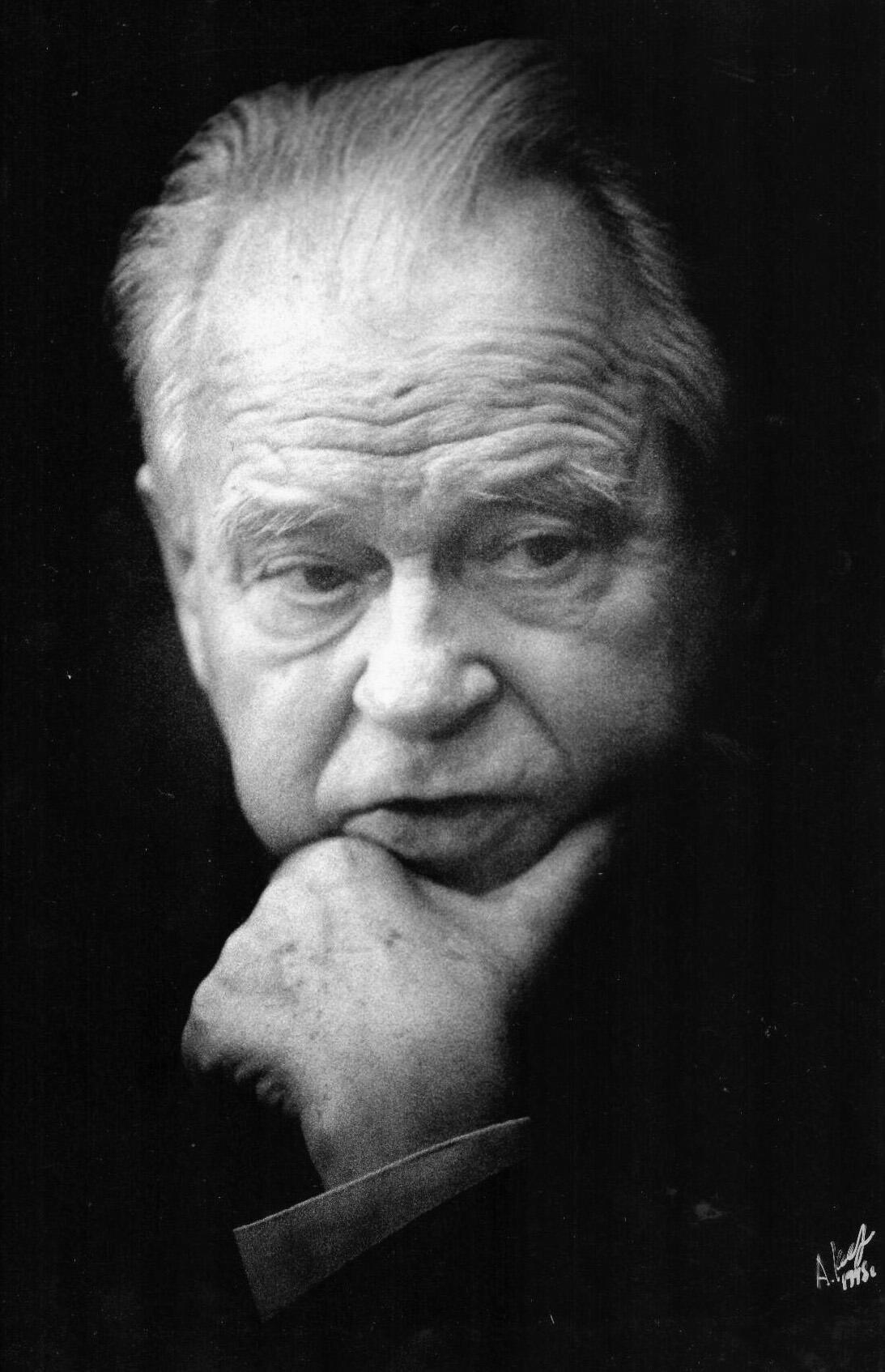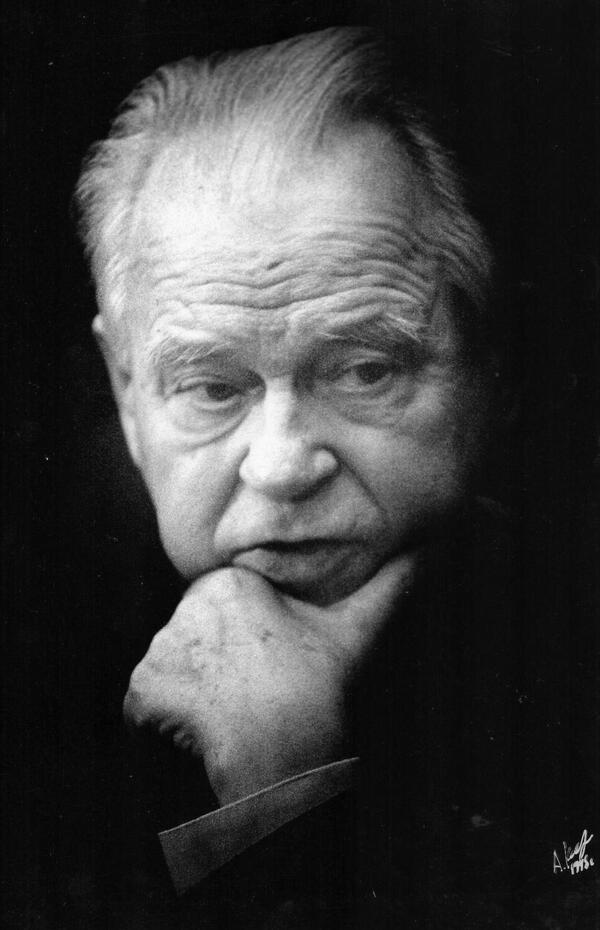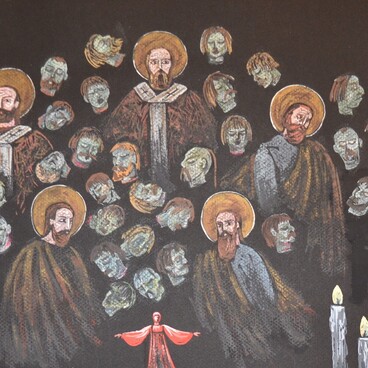The composer Tikhon Khrennikov was born in 1913 in the town of Yelets, Oryol province (now — the Lipetsk region). At the age of 16, he entered the Gnessin Music College and moved to Moscow, where he lived most of his life. Nevertheless, he often returned to his small homeland.
During one of these visits in 1998, the photographer Alexander Kozin shot a black and white portrait of Khrennikov. This year the Lipetsk region celebrated the anniversary of the famous countryman, and the customer was the governor Oleg Korolev. During their meeting, he presented the photo to Khrennikov, and in 2000 the composer donated it to the collection of the house-museum. The photography became one of the first exhibits of the exposition and took pride of place among the paintings of famous artists.
To focus the viewer’s attention on Khrennikov’s face, the photographer chose a neutral dark background and black and white film. The composer does not look into the lens — his attentive gaze is sideling, as if focused on an invisible interlocutor keeping aloof. This creates the feeling that the photograph was taken spontaneously, in the moment. A turn of the head and a careless gesture of the left hand emphasize the laconic and casual nature of the portrait. In 1998, the composer was eighty-five years old, he retired from social work and focused on musical and pedagogical activities. Before the camera appeared a man who had come a long and difficult way, but did not lose interest in life.
Alexander Kozin is a teacher, a professional photographer with 46 years of experience. He works in various genres of photography and is an acknowledged master of urban landscape and photographic portraits. He began his professional career at the age of 14 in the photography club of the House of Pioneers at the Lipetsk Tractor Plant, and then in the photo studio of the House of Culture at the Lipetsk Tractor Plant. Kozin worked as a photojournalist in the editorial offices of the Lipetskaya Gazeta, Molodezhniy Vestnik, Zolotoy Klyuchik, First September, Uchitelskaya Gazeta, Pioneer and Neonovy Gorod magazines, as well as in factory and construction low-circulation newspapers. His individual exhibitions were held in Russia, Germany and Italy.
During one of these visits in 1998, the photographer Alexander Kozin shot a black and white portrait of Khrennikov. This year the Lipetsk region celebrated the anniversary of the famous countryman, and the customer was the governor Oleg Korolev. During their meeting, he presented the photo to Khrennikov, and in 2000 the composer donated it to the collection of the house-museum. The photography became one of the first exhibits of the exposition and took pride of place among the paintings of famous artists.
To focus the viewer’s attention on Khrennikov’s face, the photographer chose a neutral dark background and black and white film. The composer does not look into the lens — his attentive gaze is sideling, as if focused on an invisible interlocutor keeping aloof. This creates the feeling that the photograph was taken spontaneously, in the moment. A turn of the head and a careless gesture of the left hand emphasize the laconic and casual nature of the portrait. In 1998, the composer was eighty-five years old, he retired from social work and focused on musical and pedagogical activities. Before the camera appeared a man who had come a long and difficult way, but did not lose interest in life.
Alexander Kozin is a teacher, a professional photographer with 46 years of experience. He works in various genres of photography and is an acknowledged master of urban landscape and photographic portraits. He began his professional career at the age of 14 in the photography club of the House of Pioneers at the Lipetsk Tractor Plant, and then in the photo studio of the House of Culture at the Lipetsk Tractor Plant. Kozin worked as a photojournalist in the editorial offices of the Lipetskaya Gazeta, Molodezhniy Vestnik, Zolotoy Klyuchik, First September, Uchitelskaya Gazeta, Pioneer and Neonovy Gorod magazines, as well as in factory and construction low-circulation newspapers. His individual exhibitions were held in Russia, Germany and Italy.



